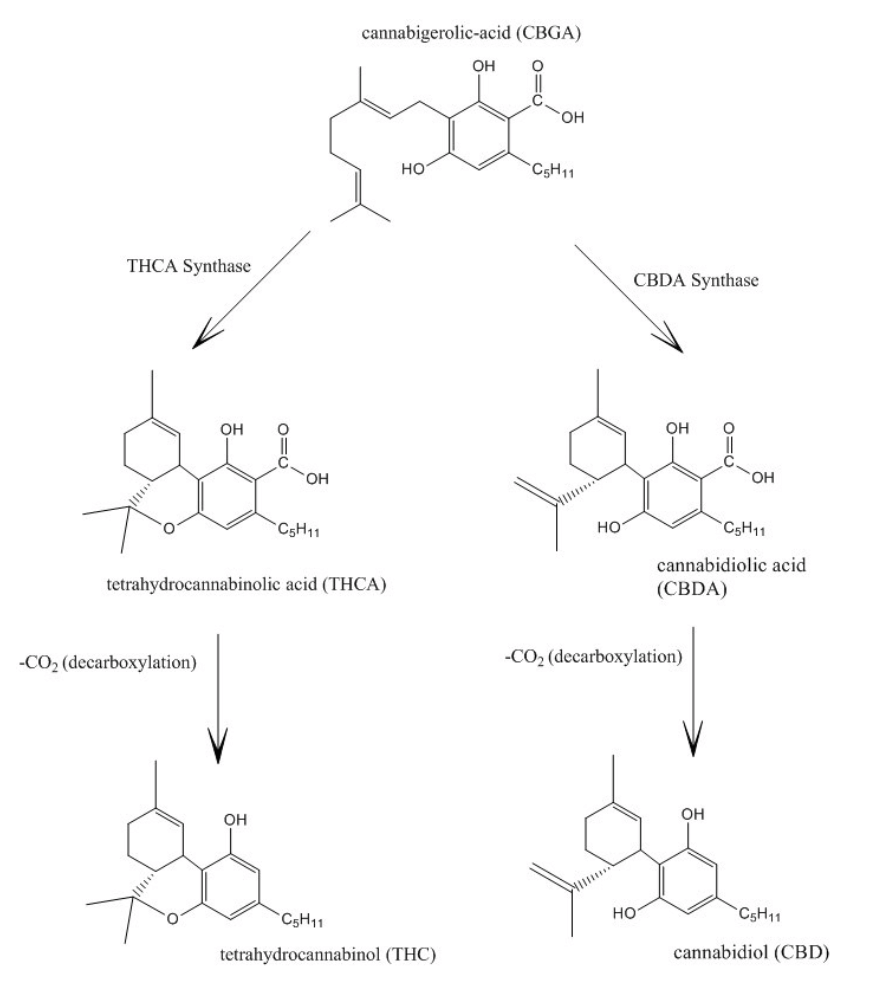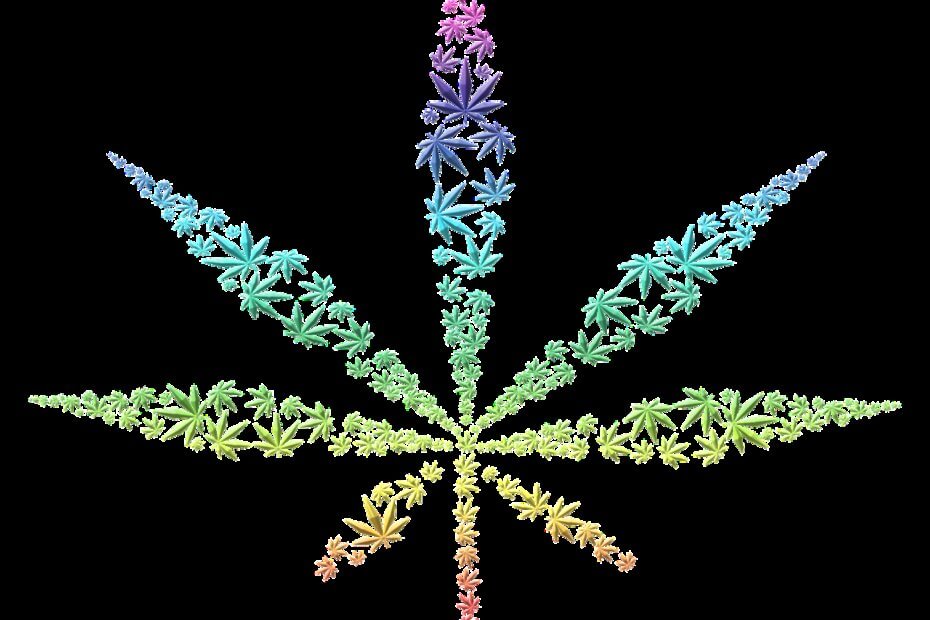Well folks, it’s time to take a technical dive into the cannabinoids. We start off with a deep dive into THC. While this may be somewhat heavy on the chemistry, for those looking for the biochemical background of the hemp/cannabis plant and how it produces all these wonderful molecules, the intellectual rewards will be ample.
Our last posts dealt with the so-called “mother of all cannabinoids,” CBG (cannabigerol), and the biosynthesis of CBD (cannabidiol) from CBG. Now let’s move on to the most famous cannabinoid, THC, or tetrahydrocannabinol.

As shown above, CBGA can be converted to both CBDA (cannabidiolic acid) and THCA (delta-9-tetrahydrocannabinolic acid) through the actions of two enzymes, CBDA synthase, and THCA synthase.
The difference between a “hemp plant” verses a “cannabis plant” has simply to do with genetics. “Hemp plants” produce far more CBDA synthase than THCA synthase: the opposite is true for THC producing “cannabis plants.” The truth is that hemp and cannabis plants are almost identical, except for the action of those two enzymes.
Delta 9 THC
THC, or more accurately, delta-9-THC, is the main psychoactive molecule in cannabis. The prefix “delta-9” refers to one of the isomers that is possible with tetrahydrocannabinol, based on the position of the double bond in the unsaturated ring. THC differs from CBD in that it has three six-member rings, whilst CBD has two. One of the rings in both molecules is an aromatic bis-phenol, while the other is a partially unsaturated hydrocarbon ring. The third ring that defines THC and its isomers can be made from CBD via intramolecular ring closure of one of the phenolic oxygens with the distal exo double bond. Indeed, CBD and THC have the same molecular formula, so that they are isomers as well.
The plant doesn’t really produce tetrahydrocannabinol. It biosynthesizes THCA from CBGA. This is important to note: THCA does not cross the blood/brain barrier, thus it has no psychoactive effects. Only after decarboxylation (which removes the acid moiety “A” from THCA) to give THC do we observe psychoactive effects. How do we remove the “A” from THCA? Heating. THCA converts to THC with heat (thus the conversion occurs from combustion of the plant) when smoking the flower. THCA extracts are simply heated to around the boiling point of water to obtain the desired THC.
Tetrahydrocannabinol in bulk is a viscous dark oil. It can be further purified by distillation. In its purified state, the compound is highly susceptible to oxidation by air, giving CBN.
Next up in our exploration of the cannabinoids will be the oxidative degradant of tetrahydrocannabinol: cannabinol (CBN).
